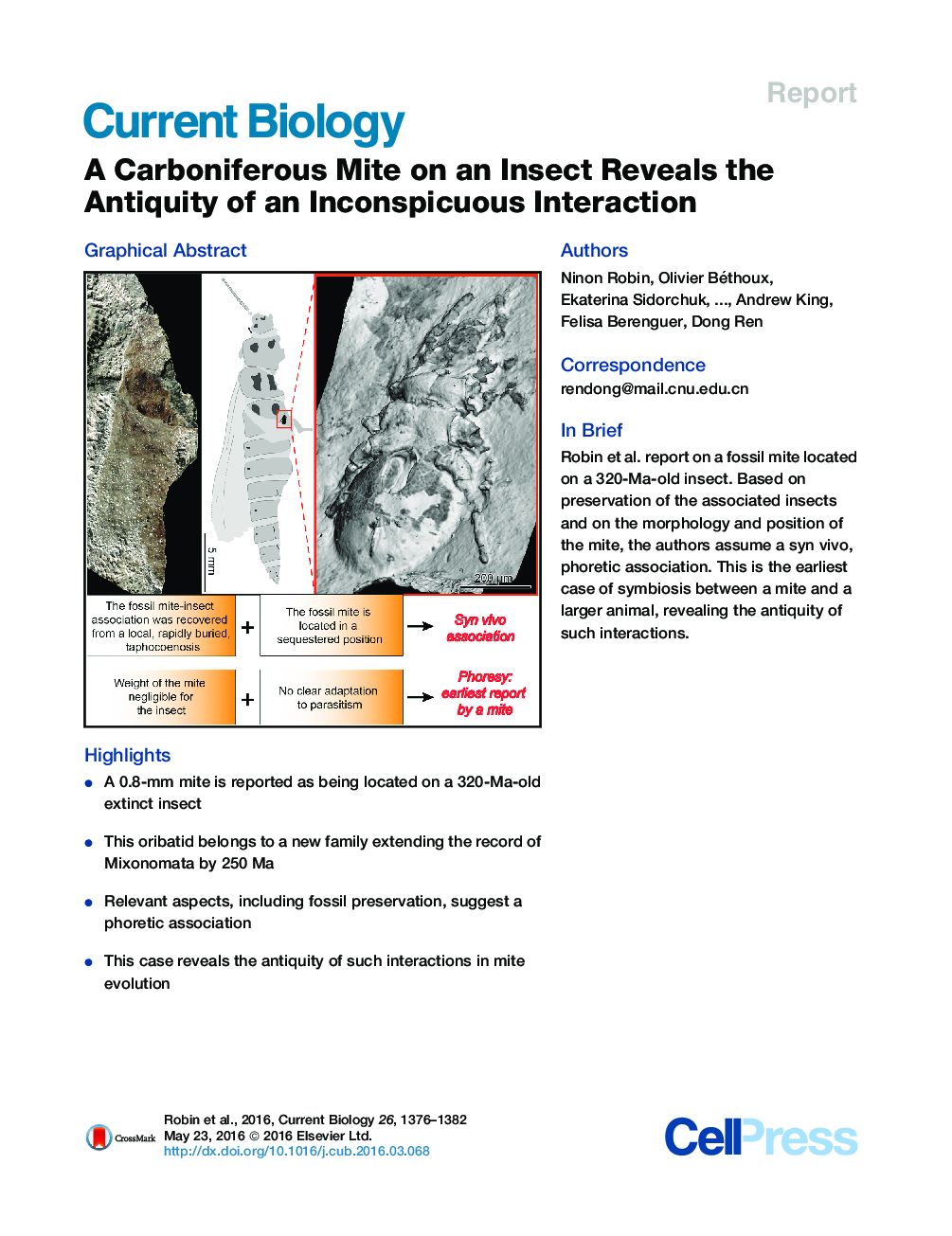| کد مقاله | کد نشریه | سال انتشار | مقاله انگلیسی | نسخه تمام متن |
|---|---|---|---|---|
| 2042656 | 1073228 | 2016 | 7 صفحه PDF | دانلود رایگان |
• A 0.8-mm mite is reported as being located on a 320-Ma-old extinct insect
• This oribatid belongs to a new family extending the record of Mixonomata by 250 Ma
• Relevant aspects, including fossil preservation, suggest a phoretic association
• This case reveals the antiquity of such interactions in mite evolution
SummarySymbiosis [1], understood as prolonged interspecific association, is as ancient as the eukaryotic cell [2 and 3]. A variety of such associations have been reported in the continental fossil record, albeit sporadically. As for mites, which as a group have been present since the Devonian (ca. 390 mya) [4 and 5] and are involved in a tremendous variety of modern-day symbioses, reported associations are limited to a few amber-preserved cases [6, 7, 8, 9, 10 and 11], with the earliest instance in the Cretaceous (ca. 85 mya) [11]. As a consequence, the antiquity and origin of associations involving small-sized mites and larger animals are poorly understood. Here we report, recovered from the Carboniferous Xiaheyan locality (ca. 320 mya), an oribatid mite located on the thorax of an extinct relative of grasshoppers, crickets, and katydids [12]. The mite was investigated using several methods, including phase-contrast tomography. The detailed morphological data allowed the placement of the mite in a new family within Mixonomata, whose fossil record is thus extended by ca. 250 Ma. Specimen and abundance distribution data derived from the fossil insect sample indicate that specimens from the corresponding excavation site were buried rapidly and were sub-autochthonous, indicating a syn vivo association. Moreover, the mite is located in a sequestered position on the insect. The observed interaction best fits the definition for phoresy, in which the benefit is transport and protection for the mite. This discovery demonstrates that this association, a trait shared by representatives of the most speciose mite taxa, arose very early during mite evolution.
Graphical AbstractFigure optionsDownload high-quality image (357 K)Download as PowerPoint slide
Journal: - Volume 26, Issue 10, 23 May 2016, Pages 1376–1382
